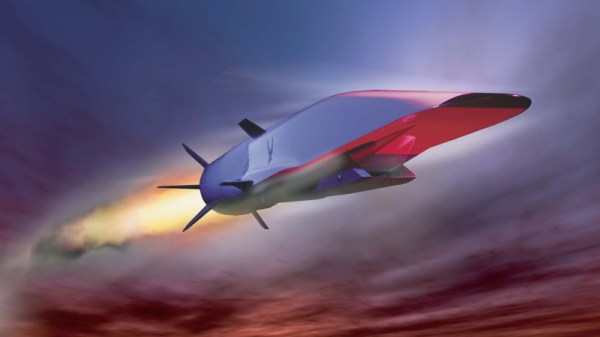A friend of ours once described computers as “high-speed idiots.” It was true in the 80s, and it appears that even with the recent explosion in AI, all computers have managed to do is become faster. Proof of that can be found in a story about using ASCII art to trick a chatbot into giving away the store. As anyone who has played with ChatGPT or its moral equivalent for more than five minutes has learned, there are certain boundary conditions that the LLM’s creators lawyers have put in place to prevent discussion surrounding sensitive topics. Ask a chatbot to deliver specific instructions on building a nuclear bomb, for instance, and you’ll be rebuffed. Same with asking for help counterfeiting currency, and wisely so. But, by minimally obfuscating your question by rendering the word “COUNTERFEIT” in ASCII art and asking the chatbot to first decode the word, you can slip the verboten word into a how-to question and get pretty explicit instructions. Yes, you have to give painfully detailed instructions on parsing the ASCII art characters, but that’s a small price to pay for forbidden knowledge that you could easily find out yourself by other means.
SR-714 Articles
Hackaday Links: March 3, 2024
Who’d have thought that $30 doorbell cameras would end up being security liabilities? That’s the somewhat obvious conclusion reached by Consumer Reports after looking at some entry-level doorbell cameras available through the usual outfits and finding glaring security gaps which are totally not intentional in any way.
All these cameras appear to be the same basic hardware inside different enclosures, most supporting the same mobile app. Our favorite “exploit” for these cameras is the ability to put them into a pairing mode with the app, sometimes by pressing a public-facing button. Slightly more technically challenging would be accessing images from the app using the camera’s serial number, or finding file names being passed in plain text while sniffing network traffic. And that’s just the problems CR identified; who knows what else lurks under the covers? Some retailers have stopped offering these things, others have yet to, so buyer beware.
Speaking of our techno-dystopian surveillance state, if you’ve had it with the frustrations and expense of printers, has Hewlett-Packard got a deal for you. They want you to never own a printer again, preferring that you rent it from them instead. Their “All-In Plan” launched this week, which for $6.99 a month will set up up with an HP Envy inkjet printer, ink deliveries, and 24/7 tech support. It doesn’t appear that paper is included in the deal, so you’re on your own for that, but fear not — you won’t go through much since the entry-level plan only allows 20 prints per month. Plans scale up to 700 prints per month from an OfficeJet Pro for the low, low price of $36. The kicker, of course, is that your their printer has to be connected to the Internet, and HP can pretty much brick the thing anytime they want to. The terms of service also explicitly state that they’ll be sending your information to advertising partners, so that’ll be fun. This scheme hearkens back to the old pre-breakup days of AT&T, where you rented your phone from the phone company. That model made a lot more sense when the phone (probably) wasn’t listening in on everything you do. This just seems like asking for trouble.

It’s been a while since Ingenuity‘s final rough landing on Mars permanently grounded the overachieving helicopter, long enough that it’s time for the post-mortem analyses to begin. The first photographic evidence we had was a shadowgram from one of the helicopter’s navigational cameras, showing damage to at least one of the rotor tips, presumably from contact with the ground. Then we were treated to a long-distance shot from Ingenuity‘s rover buddy Perseverance, which trained its MASTCAM instruments on the crash zone and gave us a wide view of its lonely resting place.
Now, geovisual design student [Simeon Schmauβ] has taken long shots made with the rover’s SuperCam instrument and processed them into amazingly detailed closeups, which show just how extensive the damage really is. One rotor blade sheared clean off on contact, flying 15 meters before gouging a hole in the regolith. Another blade looks to be about half gone, while the remaining two blades show the damaged tips we’ve already seen. That the helicopter is still on its feet given the obvious violence of the crash is amazing, as well as an incredible piece of luck, since it means the craft’s solar panel is pointing in roughly the right direction to keep it powered up.
Spy Tech: Tiny Spy Plane Becomes Cold War Prize
What looks like something famous, is much smaller, and is embroiled in a web of cold war cloak-and-dagger intrigue? It sounds like the answer could be Mini-Me from the Austin Powers movies, but we were actually thinking of the D-21 supersonic spy drone. Never heard of it? It didn’t have a very long service life, but it was a tiny little unmanned SR-71 and is part of a spy story that would fit right in with James Bond, if not Austin Powers.
The little plane had a wingspan of only 19 feet — compared to the SR-71’s 56 foot span — and was 42 feet long. It could fly at about Mach 3.3 at 95,000 feet and had a range of around 3,500 miles. It shared many characteristics with its big brother including the use of titanium and a design to present a low RADAR cross-section.
The Spy Who Photographed Me
With today’s global economy and increased international cooperation, it is hard to remember just how tense the late 1960s were. Governments wanted to see what other governments were up to. Satellite technology would eventually fill that role, but even though spy satellites first appeared in 1959, they used film that had to be retrieved by an airplane as it fell from the sky and then processed. Not exactly real time. More effective satellites would have to wait for better imaging technology — see the video below for just how bad those old satellite images were. That left spy planes to do the bulk of the work.
Continue reading “Spy Tech: Tiny Spy Plane Becomes Cold War Prize”
Scramjet Engines On The Long Road To Mach 5
When Charles “Chuck” Yeager reached a speed of Mach 1.06 while flying the Bell X-1 Glamorous Glennis in 1947, he became the first man to fly faster than the speed of sound in controlled level flight. Specifying that he reached supersonic speed “in controlled level flight” might seem superfluous, but it’s actually a very important distinction. There had been several unconfirmed claims that aircraft had hit or even exceeded Mach 1 during the Second World War, but it had always been during a steep dive and generally resulted in the loss of the aircraft and its pilot. Yeager’s accomplishment wasn’t just going faster than sound, but doing it in a controlled and sustained flight that ended with a safe landing.

In that way, the current status of hypersonic flight is not entirely unlike that of supersonic flight prior to 1947. We have missiles which travel at or above Mach 5, the start of the hypersonic regime, and spacecraft returning from orbit such as the Space Shuttle can attain speeds as high as Mach 25 while diving through the atmosphere. But neither example meets that same requirement of “controlled level flight” that Yeager achieved 72 years ago. Until a vehicle can accelerate up to Mach 5, sustain that speed for a useful period of time, and then land intact (with or without a human occupant), we can’t say that we’ve truly mastered hypersonic flight.
So why, nearly a century after we broke the sound barrier, are we still without practical hypersonic aircraft? One of the biggest issues historically has been the material the vehicle is made out of. The Lockheed SR-71 “Blackbird” struggled with the intense heat generated by flying at Mach 3, which ultimately required it to be constructed from an expensive and temperamental combination of titanium and polymer composites. A craft which flies at Mach 5 or beyond is subjected to even harsher conditions, and it has taken decades for material science to rise to the challenge.
With modern composites and the benefit of advanced computer simulations, we’re closing in on solving the physical aspects of surviving sustained hypersonic flight. With the recent announcement that Russia has put their Avangard hypersonic glider into production, small scale vehicles traveling at high Mach numbers for extended periods of time are now a reality. Saying it’s a solved problem isn’t quite accurate; the American hypersonic glider program has been plagued with issues related to the vehicle coming apart under the stress of Mach 20 flight, which heats the craft’s surface to temperatures in excess of 1,900 C (~3,500 F). But we’re getting closer, and it’s no longer the insurmountable problem it seemed a few decades ago.
Today, the biggest remaining challenge is propelling a hypersonic vehicle in level flight for a useful period of time. The most promising solution is the scramjet, an engine that relies on the speed of the vehicle itself to compress incoming air for combustion. They’re mechanically very simple, and the physics behind it have been known since about the time Yeager was climbing into the cockpit of the X-1. Unfortunately the road towards constructing, much less testing, a full scale hypersonic scramjet aircraft has been a long and hard one.
Continue reading “Scramjet Engines On The Long Road To Mach 5”













